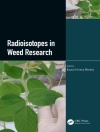Monitoring Nature Conservation in Cultural Habitats presents monitoring as an integral component of responsible conservation management and as a catalyst for decision making. The early sections of the book cover key areas in the development of a monitoring project, including:
– The roles of survey and surveillance
– Incorporating knowledge from existing research
– Identifying the conservation priority on sites
– Minimising observer error
– Identifying site-specific condition indicators for habitats
– Collecting monitoring data.
The later sections of the book comprise a series of case studies covering a wide range of habitats and species. These case studies focus mostly, though not exclusively, on sites that form part of the Natura 2000 series in Europe.
विषयसूची
An Introduction to Conservation Monitoring.- Monitoring in Cultural Habitats.- The Relationship Between Monitoring and Management.- Traditional Approaches to Data Collection.- The Roles of Survey.- Surveillance.- Strategic Sampling.- Developing Projects for Monitoring Habitats.- Developing a Habitat Monitoring Project.- Identifying the Conservation Priority.- Incorporating Knowledge from Research.- Developing a Conservation Strategy.- Minimising Observer Error.- Identifying Site-Specific Condition Indicators for Habitats.- Where to Focus the Monitoring Effort.- Collecting the Monitoring Data.- The Supporting Roles of On-Site Photography.- Integrating Data in Geographical Information Systems.- The Case Studies.- The Monitoring Case Studies.- Monitoring Coastal Heaths at St David’s.- Monitoring Arable Weeds at Newton Farm.- Monitoring Neutral Grassland at Somerton Farm.- Monitoring the Brown Bear Ursus Arctos in Västerbotten County.- Monitoring the Wolverine Gulo Gulo in Västerbotten County.- Monitoring the Greater Mouse-Eared Bat Myotis Myotis on a Landscape Scale.- Monitoring Choughs Pyrrhocorax Pyrrhocorax on the Castlemartin Peninsula.- Narrow-Mouthed Whorl Snail Vertigo Angustior at Whiteford Burrows.- Monitoring The Heath Fritillary Mellicta Athalia in Thornden and West Blean Woods.- Woodland Monitoring.- Woodland Management.- Issues Specific to Monitoring Broad-Leaved Woodland.- Monitoring Issues Specific to Western Taïga Forests.- Beech Fagus Sylatica Forests at Biskopstorp.- Using Information from Remote Images.- Using Earth Observation to Monitor Habitats.- Planning a Remote Sensing Project.- Remote Sensing of Dune Habitats at Kenfig NNR.- Remote Sensing of Fen Vegetation at Cors Crymlyn NNR.- Coastal Lagoons in Sweden and Finland.- Looking to the Future.-The Challenges and Opportunities that Lie Ahead.












